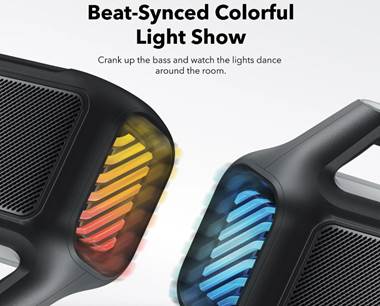Active
Noise Cancellation (ANC) transforms audio experiences by reducing unwanted
ambient sounds, creating an immersive listening environment. Ideal for
commuting or focusing at work, anc headphones
counteract external noise using advanced electronic techniques. These devices
analyze surrounding sounds and generate inverse sound waves to cancel them out,
delivering pure audio or silence. Understanding ANC technology helps in
choosing the right headphones. This blog explores the science behind ANC, its
components, different types, and the benefits and limitations of this
innovative feature.

The Science Behind Active Noise Cancellation
Understanding Sound Waves and Interference
Sound
travels in waves, each with unique frequencies and amplitudes that determine
pitch and loudness. When two sound waves meet, they interact in a process
called interference, where waves can either amplify or cancel each other out.
This principle is crucial in active noise cancellation (ANC), as ANC technology
generates inverse sound waves to neutralize unwanted noise, creating a quieter
listening experience.
Phase Inversion and Destructive Interference
ANC
technology relies on phase inversion, a process where a sound wave is flipped
or inverted to create a mirror image of itself. When the original sound wave
and the inverted wave meet, they cancel each other out through destructive
interference. This means the peaks of one wave align with the troughs of the
other, effectively neutralizing the sound.
Key Components of ANC Headphones
Microphones: Capturing Ambient Noise
ANC
headphones use built-in microphones to detect ambient sounds in the
environment. These microphones continuously capture external noise and convert
it into electrical signals. The system then processes these signals and
generates anti-noise sound waves, which cancel out unwanted background noise.
This technology allows users to enjoy clearer audio without external
disturbances, enhancing their listening experience.
Electronic Circuitry: Processing and Inverting Signals
The
electrical signals captured by the microphones are transmitted to an advanced
electronic circuitry system embedded within the headphones. This system
analyzes the incoming noise, processes the signals, and then produces a precise
"anti-noise" wave. This wave is a phase-inverted version of the
detected ambient noise, effectively canceling out unwanted sounds and enhancing
the listening experience.
Speakers: Emitting Anti-Noise
The
generated anti-noise wave is played through the headphone speakers along with
your music or other audio. This anti-noise wave interacts with the ambient
sound, effectively canceling it out through destructive interference. This
combination results in a significantly reduced level of background noise
reaching your ears, allowing for a much clearer and focused listening
experience.
Types of Active Noise Cancellation
Feedforward ANC
Feedforward
ANC systems use external microphones on the ear cups to detect ambient noise
before it reaches your ears. This captured noise is processed and inverted,
generating an opposite sound wave that effectively cancels unwanted sounds.
This proactive noise cancellation method works well against consistent external
noise but may struggle with sudden, unpredictable sounds.
Feedback ANC
Feedback
ANC places microphones inside the ear cups, close to your ears, to monitor the
sound you hear. These systems analyze external noise and generate an inverted
canceling signal in real time. By directly addressing the sound reaching your
ears, feedback ANC provides precise, fine-tuned noise reduction, making it
effective for blocking out a wide range of ambient sounds.
Hybrid ANC
Hybrid
Active Noise Cancellation (ANC) combines both feedforward and feedback systems,
using microphones placed inside and outside the ear cups to detect and cancel
unwanted sounds. This dual-microphone setup enhances noise reduction across a
broader frequency range, making it more effective in various environments. Due
to its superior performance, Hybrid ANC is commonly found in premium
headphones, offering an immersive listening experience with minimal external
interference.

Benefits and Limitations of ANC Technology
Advantages of ANC
ANC
headphones provide an immersive listening experience by reducing background
noise. They enhance focus during travel or work in noisy settings, ensuring
clearer audio. Additionally, they help protect hearing by minimizing prolonged
exposure to loud sounds. Whether for music, calls, or concentration, ANC
technology creates a quieter environment, making daily activities more
enjoyable and productive. Perfect for travelers, professionals, and audiophiles
alike.
Potential Drawbacks
However,
ANC isn’t without its limitations. The technology requires power, so ANC
headphones need batteries or frequent recharging. Some users may find the
sensation of noise cancellation uncomfortable, as it can create a feeling of pressure
in the ears. Additionally, high-quality ANC headphones can be more expensive
than their non-ANC counterparts.
Conclusion
Active
Noise Cancellation (ANC) technology enhances audio experiences by actively
reducing ambient sounds. It works through microphones that detect external
noise, processors that create inverse sound waves, and speakers that emit the
anti-noise. There are three main types: feedforward, feedback, and hybrid, each
catering to different needs. While ANC improves focus and protects hearing,
potential downsides include higher costs and comfort concerns. Despite this,
ANC headphones remain a valuable investment for immersive listening in an
increasingly noisy world.



